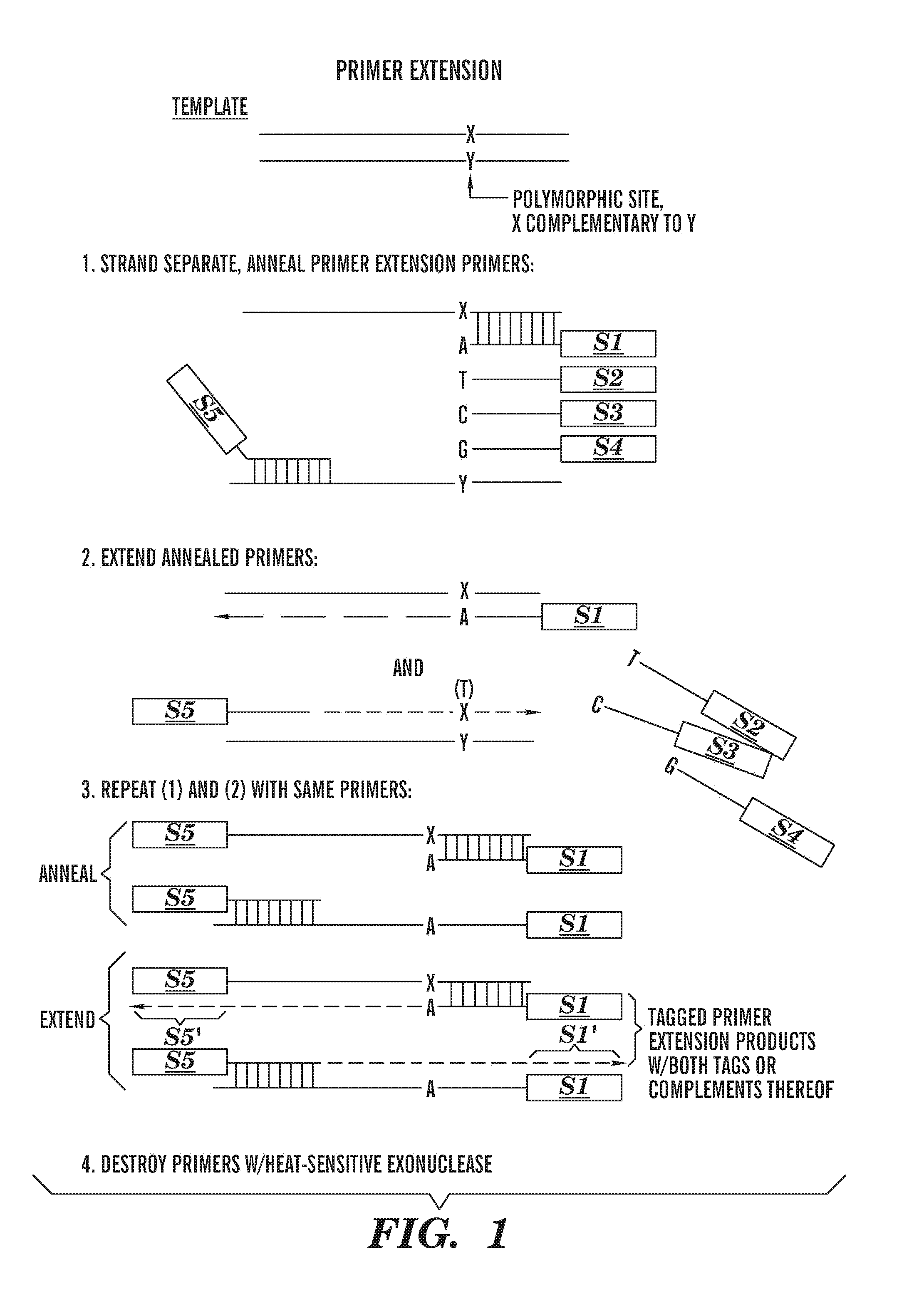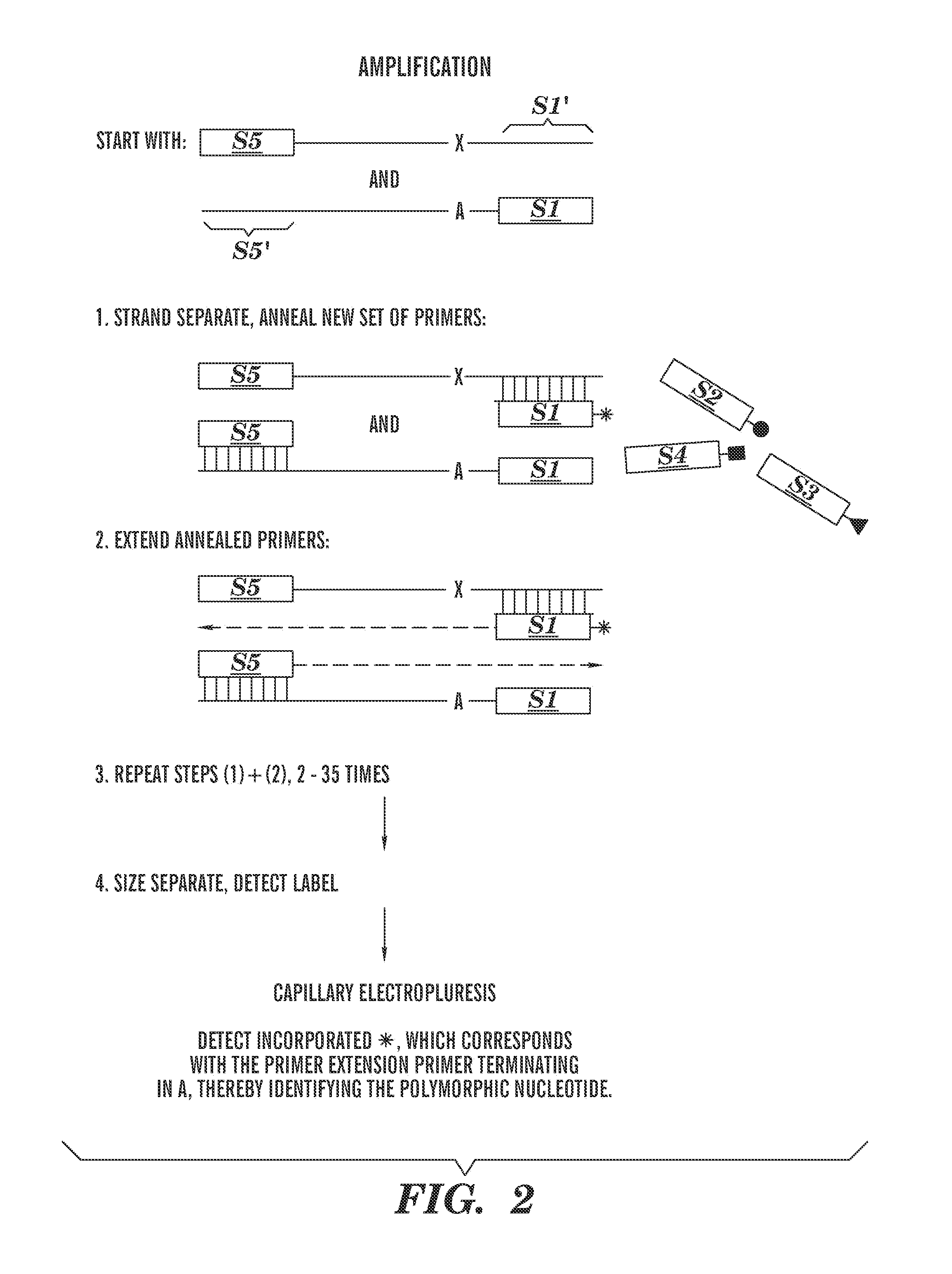Methods of detecting sequence differences
a technology of sequence differences and methods, applied in the field of molecular genetic methods, can solve the problems of limited rflp analysis, limited throughput, and limited method dependence on polyacrylamide, and achieve the effect of reducing the impact of problems
- Summary
- Abstract
- Description
- Claims
- Application Information
AI Technical Summary
Benefits of technology
Problems solved by technology
Method used
Image
Examples
example 1
Detection of Single Nucleotide Differences
[0144]Leber's hereditary optic neuropathy (LHON) is associated with the presence of several point mutations in mitochondrial DNA, at positions 3460, 11778 and 14459.
Mutant:SNP region 34605′-CGG GCT ACT ACA ACC CTT CGC TGA CGCCAT AAA-3′ (SEQ ID NO: 1)117785′-TCA AAC TAC GAA CGC ACT CAC AGT CGCATC ATA-3′ (SEQ ID NO: 2)144595′-CTC AGG ATA CTC CTC AAT AGC CAT CGCTGT AGT-3′ (SEQ ID NO: 3)(Polymorphic site shown in BOLD, underline)
[0145]The genotype of an individual with respect to SNPs in human mitochondrial DNA associated with Leber's hereditary optic neuropathy (LHON) can be determined as follows.
[0146]Primers:
a) Upstream Primers.
[0147]The upstream primers are as follows:
MutantUpstream primer34605′-gttacaagat tctcacacgc taagg-TTC ATA GTA GAA GAG CGA TGG-3′(SEQ 1D NO: 4)117785′-gttacaagat tctcacacgc taagg-AAA AAG CTA TTA GTG GGA GTA-3′(SEQ ID NO: 5)144595′-gttacaagat tctcacacgc taagg-TCG GGT GTG TTA TTA TTC TGA-3′(SEQ ID NO: 6)(...
PUM
| Property | Measurement | Unit |
|---|---|---|
| Size | aaaaa | aaaaa |
| Heat | aaaaa | aaaaa |
| Fluorescence | aaaaa | aaaaa |
Abstract
Description
Claims
Application Information
 Login to View More
Login to View More - R&D
- Intellectual Property
- Life Sciences
- Materials
- Tech Scout
- Unparalleled Data Quality
- Higher Quality Content
- 60% Fewer Hallucinations
Browse by: Latest US Patents, China's latest patents, Technical Efficacy Thesaurus, Application Domain, Technology Topic, Popular Technical Reports.
© 2025 PatSnap. All rights reserved.Legal|Privacy policy|Modern Slavery Act Transparency Statement|Sitemap|About US| Contact US: help@patsnap.com


